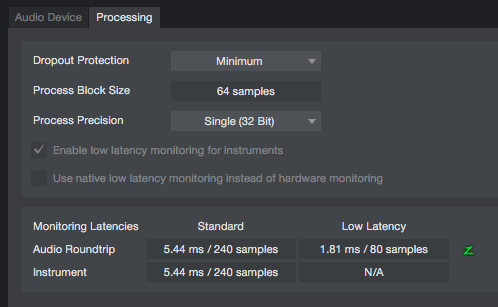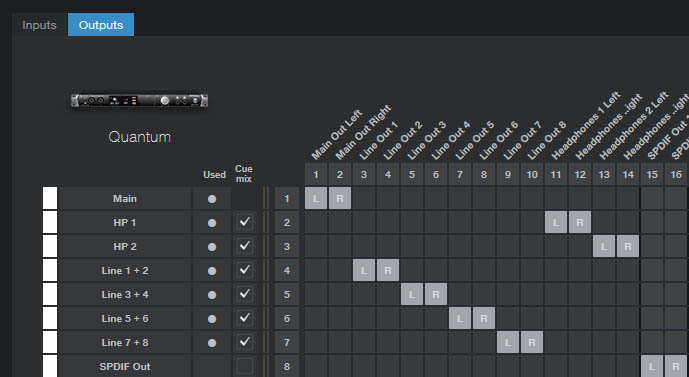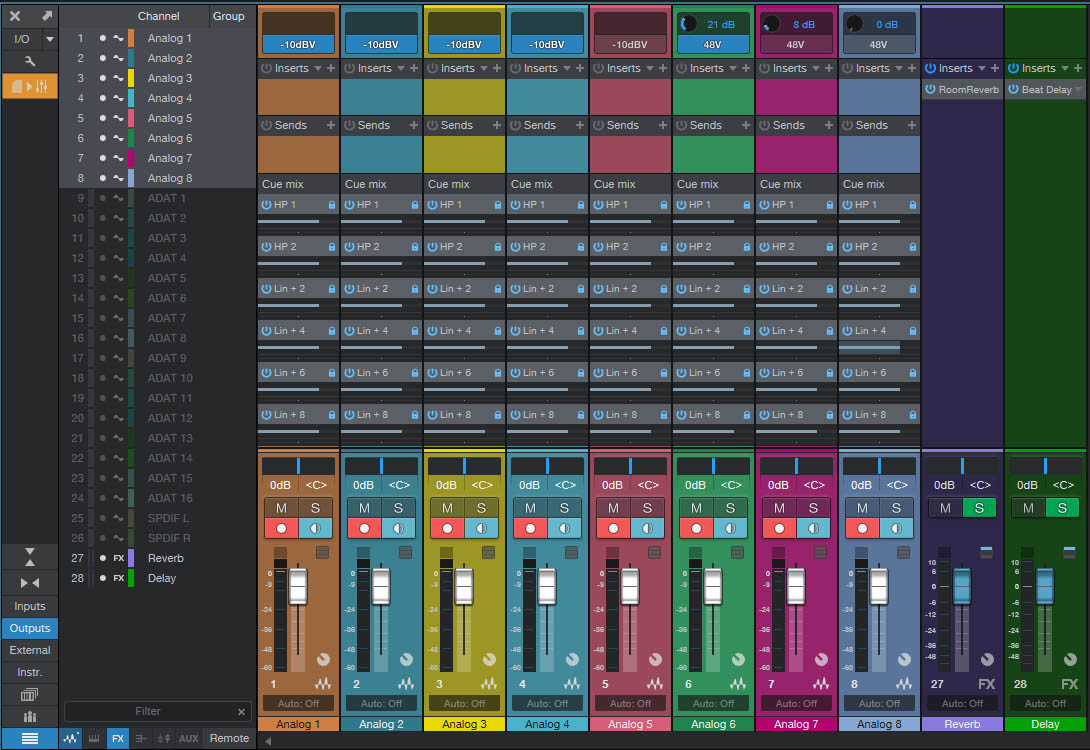Home / How Do I Make a Monitor Mix with My Audio Interface?
How Do I Make a Monitor Mix with My Audio Interface?

How you listen to yourself while you record is critical to getting a good performance, and dialing in a monitor mix can be one of the initial sources of frustration for engineers and musicians alike. The good news is that almost every audio interface provides some level of personal monitoring ability. This article will cover the most common types of low-latency personal monitoring solutions available on audio interfaces today. While we’ll be using PreSonus® audio interfaces as examples because we know them best, these principles can be applied to any audio interface that provides similar monitoring solutions to the ones described here.
The Slow Moving Elephant in the Room
First things first: Let’s talk about the problem. We can sum it up in a single word: Latency. And once you know what latency is and how it works, it gets easier to find your way around it while monitoring your performances when you’re recording.
 Latency is the time it takes for the sound you are generating to come back to your headphones, and many things impact it. But basically, everything between your guitar, for example, and your headphones, needs a little time to perform its function, and that time adds up.
Latency is the time it takes for the sound you are generating to come back to your headphones, and many things impact it. But basically, everything between your guitar, for example, and your headphones, needs a little time to perform its function, and that time adds up.
The most significant contributor to latency is the buffer size you’ve set in your DAW. Depending on your audio driver, this buffer size can be set from 16 to 4,096 samples. The buffer size determines the amount of time you are allocating for your computer to process the incoming information. This time adds to the delay between what you are recording and what you are hearing. We know what you’re thinking: “But 16 samples isn’t that long….”
And that’s precisely the problem. Depending on how fast your computer is and how much RAM it has, 16 samples might not be enough time for it to do everything it must to record and playback audio. When you don’t allocate enough time for your computer to do its job, it will insert artifacts (pops, clicks, distortion) into your recording.
 As a general rule, the lower the buffer size, the harder your computer is going to have to work. So, if you decide to monitor through your DAW, you will have to contend with some amount of latency. Studio One provides some relief for this problem with native low-latency monitoring. Studio One’s audio-engine latency management allows you to better manage your system buffers. The result is faster performance and better stability, including flexible dropout protection that reduces the risk of audio dropouts in CPU-heavy songs, even at minimal buffer settings. This is made possible by separating the processing cycles for audio monitoring, virtual instrument monitoring, and playback.
As a general rule, the lower the buffer size, the harder your computer is going to have to work. So, if you decide to monitor through your DAW, you will have to contend with some amount of latency. Studio One provides some relief for this problem with native low-latency monitoring. Studio One’s audio-engine latency management allows you to better manage your system buffers. The result is faster performance and better stability, including flexible dropout protection that reduces the risk of audio dropouts in CPU-heavy songs, even at minimal buffer settings. This is made possible by separating the processing cycles for audio monitoring, virtual instrument monitoring, and playback.
Depending on the settings for Device Block Size and Dropout Protection, native low-latency monitoring can be achieved even with complex songs using many plug-ins and virtual instruments. Higher Dropout Protection settings result in a larger block-size for playback, while smaller Device Block Size settings result in lower audio and virtual instrument monitoring latency.
For a deeper dive into Digital Audio Latency, please see this article.
Many audio-interface manufacturers have solved the problem of monitoring latency through a DAW by providing zero-latency or low-latency monitoring solutions onboard their interfaces. That is what the rest of this article will explain.
Direct Monitoring
No matter which manufacturer’s product you are using, you may have heard the term "Direct Monitoring." This refers to the ability to monitor your input signal directly from the interface before it goes to your DAW. This removes the biggest chunk of processing time and allows you to hear your input source almost instantaneously.
There are essentially four ways that Direct Monitoring is accomplished:
- A blend control
- A switch
- A simple DSP mixer
- A more complex DSP mixer
Each of these solutions has unique benefits. Let’s take a closer look at how to get a great mix with each one.
 Some DAWs, like Studio One, enable software monitoring by default. Because you’ll be monitoring your input from your interface, you’ll want to turn that off in order to prevent hearing your low-latency input signal blended with your latent input signal coming from your DAW. In Studio One, it’s as simple as clicking on the monitor button on the track. Check the documentation that came with your DAW to find out how to turn this off. You’ll want software monitoring disabled regardless of which direct monitoring solution your audio interface employs.
Some DAWs, like Studio One, enable software monitoring by default. Because you’ll be monitoring your input from your interface, you’ll want to turn that off in order to prevent hearing your low-latency input signal blended with your latent input signal coming from your DAW. In Studio One, it’s as simple as clicking on the monitor button on the track. Check the documentation that came with your DAW to find out how to turn this off. You’ll want software monitoring disabled regardless of which direct monitoring solution your audio interface employs.
Option 1: The Blend Control | AudioBox USB 96, AudioBox iTwo, and Studio 24c

One of the easiest solutions is to simply blend the analog input signal with the playback from the computer. The simple analog Mixer knob on the front panel of the PreSonus AudioBox USB 96, AudioBox iTwo, and Studio 24c allows you to blend the analog (pre-converter) input signal with the stereo playback stream from the computer.

If you’re thinking this sounds like a crossfader on a DJ mixer, you’re spot on. In this case, you’re crossfading between your inputs and your playback. The further to the left you turn the knob, the larger the percentage of the input signal is in your mix. The further to the right you turn it, the more playback you will hear.
To dial in your monitor mix, you just set a good recording level in your DAW and adjust the blend knob to taste.
Option 2: The Direct Monitoring Switch | AudioBox iOne, Studio 26c, and Studio 68c

A similar solution is utilized by the AudioBox iOne, Studio 26c, and Studio 68c. These interfaces provide a Direct Monitor switch that sums the analog signal with the playback streams, giving you an equal mix of the two.
To dial in your monitor mix, set a good recording level for your input and adjust the output level of the playback from your DAW by raising or lowering the Main output level of your DAW to taste using the main fader in your DAW console.
Option 3: The Simple DSP Mixer | Studio 1810c and 1824c

More advanced interfaces, like the Studio 1810c and Studio 1824c, provide onboard DSP that allows you to create a basic monitor mix. This is where things get a lot more flexible and a little more complicated. What makes the DSP mixer solution seem daunting is that all the connections are invisible, so it can make it difficult to understand how all the audio is routed.
Let’s take a closer look at the Studio 1810c.
What if we told you that the monitoring solution that came with your Studio 1810c looked like this:

Note: For the sake of simplicity, this illustration omits the digital I/O available on the Studio 1810.
While the mixer in the illustration above exists in the software domain only, its functions are essentially the same as the analog mixer in our example. The mixer in UC Surface is hardwired with input signals from the Studio 1810c and the output signals from your DAW. These sources are then summed into three different stereo mixes.
When UC Surface is enabled, the outputs from your DAW always go through UC Surface first before they are sent out the physical outputs of your Studio 1810c. The inputs of your Studio 1810c are split as shown below:

Option 4: The Complex DSP Mixer | Studio 192 Series
Some interfaces, like the Studio 192 Mobile and Studio 192, provide powerful onboard DSP with most of the functions one would find on a digital console. Anyone who has recorded using a PreSonus StudioLive® mixer (or anyone who has tracked with any mixer, for that matter) knows how important it is to be able to record a track while hearing effects, as well as compression and equalization. For example, if reverb on a vocal is going to be part of the final mix, it’s almost impossible to record the vocal “dry” because phrasing and timing are totally different when you can’t hear the duration and decay of the reverb.
The Studio 192 and Studio 192 Mobile provide the same user experience as monitoring through an outboard mixer, without the additional cost, complexity, and cabling that kind of setup entails. These devices are equipped with a powerful onboard DSP that is capable of running 16 instances of the Studio One Fat Channel plug-in, plus reverb and delay.
Just like the simple DSP mixer, a complex DSP mixer like the one used by the Studio 192 and Studio 192 Mobile provides the same features as an inline digital mixer. In this way, you can create a professional sounding monitor mix.
Because the Fat Channel processing can be printed while recording, the Studio 192 and Studio 192 Mobile provide another unique benefit: If you like the sound of the audio in your headphones, you can choose to record exactly that sound, leaving your gate, compression, and EQ processing a permanent part of your audio.
The rest of this section will provide a step-by-step tutorial on dialing in a monitor mix using a Studio 192 or Studio 192 Mobile. Again, these same steps can be used for any Studio-series interface. The Fat Channel processing, however, is unique to these products.
Step 1: Gain Staging
The first step is to set the input level of your source. This should be set by using the metering in your DAW, not UC Surface. For more information on Gain Staging methodology, please see this article.

Step 2: Select Your Mix
Select the mix with which you’d like to start. For our tutorial, we will be starting with Mix 1/2.

Step 3: Set Your Channel Level
Raise the fader until you have a good level for your mix.

Step 4: Set Your Pan
Adjusting the panning of your channel can make it more present in the mix by giving it room to stand out among the other channels. Setting the pan position to center for every channel can cause comb filtering and distortion, so taking a few extra minutes to dial in the pan position for your channels is worth the effort.

Step 5: Dial in Your Dynamics and EQ
Select your channel and adjust the gate, compression, and EQ to taste.

Step 6: Decide if You Want to Print
If you like what you hear, you can engage the Post Send button. This will record the signal exactly as you are hearing it, gate, compression, EQ, and all.

Step 7: Add Some Reverb
Click on the FX A Mix and raise the fader to set the amount of reverb you’d like to add.

Option 5: Software-Based Monitoring via a Low-Latency Interface | Quantum Series

As audio technology evolves, connectivity speeds rise while latency numbers fall. And it’s only with the advent of Thunderbolt connectivity that we have been able to create the Quantum series of interfaces that, for the first time, feature a round-trip latency low enough to make many of the above monitoring solutions a little obsolete. That sounds great and all, but what does that mean, practically speaking?
It means that the Quantums pass signal to and from your DAW quickly enough to allow monitor mixing and routing to be managed by Studio One rather than in the interface hardware itself—and it happens so darn fast that the latency is typically not even audible to a degree that would screw up your performance. Remember that slow-moving elephant in the room from the top of this article? Well, the Quantums have effectively shipped the elephant back to a wildlife preserve, where you don’t have to worry about it any more.
This power comes with some caveats that verteran interface users may need to get used to. For example, with a Quantum-series interface, you can’t monitor directly from the inputs on the hardware—you need to have a DAW running and set up with Quantum to monitor the performance. This means you can’t use it as a standalone mixer without a DAW, for example. Furthermore, you won’t be using Universal Control to manage your routing or monitor mixes—it will be 100% handled in your DAW.
You can set up monitor mixes with your Quantum interface using Studio One’s unique Cue Mix feature. Cue Mixes are prioritized by Studio One to take advantage of the lowest possible latency. While you’re welcome to set up your own Cue mixes, we’ve done a lot of the work for you already with Studio One’s interface-based templates. At the time of this writing, Studio One includes templates for Quantum, Quantum 2, Quantum 4848, and Quantum 2626—and they have some handy default monitoring routing all set up for you!
Step 1. When creating a new song, click the Interfaces tab and choose your Quantum interface.

2. Visit the I/O screen in Song Setup to check out the Cue mixes that have already been set up for you! (Check out the Outputs Tab)

Above, you can see Cue Mixes set up for two headphone outputs (HP1 and HP2, representing the Headphone Outs on the front of the Quantum) and several Line Outputs in stereo pairs, assigned to the Line Outs on the back of the Quantum. Note that this configuration is very useful for distributing mixes to a headphone amplifier like the HP60.
3. Going back to Studio One’s Console, you’ll find your Cue Mix send controls in your audio channels.

Here, you can adjust the level of each channel to each Cue mix. So when your bass player wants to hear more kick drum, here’s where you let ‘em have it. And when everyone needs less contrabass sousaphone, here’s where you’ll take it away.
Categories